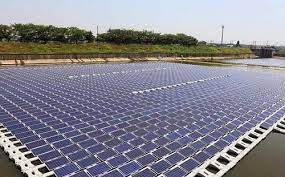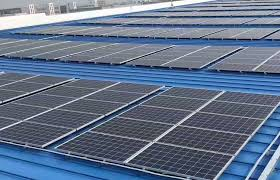1. Solar energy resources
1.1 Radiation of solar energy resources
Since photovoltaic power stations mainly rely on solar radiation energy in operation, the status of solar radiation resources is also an important factor in the location of photovoltaic power stations. The radiation of solar energy resources is mainly characterized by direct solar radiation and sunshine hours in two forms, and in the direct radiation of solar energy, the part of solar radiation that directly passes through the atmosphere to the surface is called direct radiation. Direct radiation contributes the most to the power generation generated by photovoltaic arrays. The number of hours of sunlight will directly affect the total amount of solar radiation collected by the photovoltaic array.
1.2 Solar energy quality assessment
The quality of solar energy will affect the actual use of photovoltaic power stations. Generally speaking, the more abundant solar energy and the more stable solar energy, the more the quality of solar energy can be played, and the scientific research relies on the relevant standards in the “Total radiation of Solar Resource Grade” to evaluate and judge the abundance of solar energy and the quality of solar energy. In judging the stability of solar energy, it is necessary to use the annual solar energy statistics in the region, in general, the ratio between the minimum value and the maximum value of the total monthly radiation is closer to 1, which can indicate that the greater the stability of solar energy, the more suitable for power generation.
2. Meteorological influencing factors
The solar radiation received by the surface is affected by many factors, such as latitude and longitude, altitude and season. The solar energy absorption effect between different regions is generally different, so when choosing the construction site of photovoltaic power station, the influence of weather on the acceptance of surface solar energy should be taken into account to complete the selection of power station. Among them, there are three factors that have a greater impact on the surface, which are cloud cover, temperature and relative humidity. As clouds will have a direct impact on solar radiation, larger particles of dust will reflect solar radiation to a certain extent, reducing solar radiation and affecting power generation. Therefore, when choosing a power station location, you should choose an area with a clear climate and less cloud cover. The impact of temperature on photovoltaic power generation is mainly reflected in the impact on photovoltaic modules, if the ground temperature is too high, it will affect the normal use of photovoltaic modules, thus affecting the power generation efficiency of the power station. Therefore, when choosing the address of the power station, we should try to choose the current climate environment is more stable, and the highest temperature should not be too high. The impact of relative humidity on photovoltaic power stations is mainly reflected in the negative aspects, and the increase of relative humidity will lead to the reduction of light intensity and temperature of photovoltaic power generation components, which will adversely affect the normal use of power station components.

3. Other natural resource impacts
In addition to the above mentioned several meteorological factors, there are other natural resource conditions will have an impact on the power generation of photovoltaic power generation, the relevant staff need to take into account the above factors when selecting the address of photovoltaic power station, carefully identify the appropriate power generation location. The first is the impact of geographical dimensions on photovoltaic power generation. Since the height of the geographical dimension will affect the height Angle of the sun and further affect the radiation intensity of the sun, in order to improve the solar radiation intensity, it is necessary to choose a position with a large solar height Angle as far as possible to build a photovoltaic power station. The second more common influencing factor is terrain and landform. Topography and geomorphology mainly affect the early project construction and later operation management of photovoltaic power stations. Because photovoltaic power stations usually cover a large area, it is necessary to choose a flat and open area when choosing a site, so that the power station can be developed on a large scale. Geological structure is also an important influencing factor in the construction of photovoltaic power stations, so the geological conditions that can be smoothly constructed should be selected when selecting the site, and the influence of geological factors on the construction of photovoltaic power stations should be reduced to the greatest extent. And because the land of the photovoltaic power station has clear requirements, the nature of the land and the property of the land also determine whether the photovoltaic power station can start smoothly when the address is selected.
4. Industry guarantee impact
Industry security impact is an important factor affecting the income of photovoltaic power generation, if you want to increase the income of photovoltaic power generation, it is necessary to analyze from the five aspects of access to the grid factors, grid capacity, on-grid electricity price and traffic road conditions to ensure the benefits of photovoltaic power generation. The factors that affect access to the power grid mainly include access distance, access conditions and access difficulty. In the selection of photovoltaic power stations, the power station should be as close to the grid as possible to reduce the length of the transmission line, in this way to minimize the loss in the transmission process, so that the cost of power generation and transmission costs can be reduced. The second factor is access conditions. Under normal circumstances, the access conditions of photovoltaic power stations are responsible for the higher power grid. The main influence on the difficulty of access is the local geographical environment, so the photovoltaic power station needs to choose a flat and open place as far as possible. Grid capacity is the maximum capacity of the local power grid, which is also the maximum capacity that can accommodate photovoltaic power stations. In order to ensure that the PV power station and the local grid capacity match, it needs to be considered as an important factor before the construction of the facility. Since the on-grid electricity price is an important parameter of the output end, and the electricity price is greatly affected by the local government policy, the site should be selected as far as possible in the price policy favorable areas, so as to improve the economic benefits of photovoltaic power generation.

5. Socio-economic factors
Social and economic development will also affect the construction of photovoltaic power stations to a certain extent, generally speaking, the more economically developed areas have a greater demand for electricity consumption, the construction of photovoltaic power stations in economically developed areas can play an important role in alleviating the local economic pressure and supporting the development of local economic conditions, in some areas with a higher degree of economic development, the demand for electricity is greater. It can also have a positive impact on the construction and development of photovoltaic power stations. In addition to the local economic conditions will have an impact on the development of photovoltaic power stations, the degree of local industrial development will also have an impact on the application of photovoltaic power stations. Generally speaking, the industrial industry has a large demand for electricity, and a more developed industrial area will greatly stimulate the power supply. Therefore, photovoltaic power generation projects are more suitable for the establishment of industrial developed areas, to provide local power support and assistance, to promote local economic development, to complete the employment of more residents. The level of power consumption is a direct indicator of local power demand, and areas with strong absorption capacity are more suitable for the construction of photovoltaic power generation projects.
Conclusion: To sum up, because photovoltaic power generation is a clean energy, it has less damage to the natural ecological conditions and geographical conditions of the local power generation, and is a new power generation model worthy of vigorous promotion. However, it is necessary to take into account the local natural geographical factors, social and economic factors and policy factors when selecting a photovoltaic power station. Choose more abundant solar energy, while the geographical environment is better to complete the construction of photovoltaic power stations.






